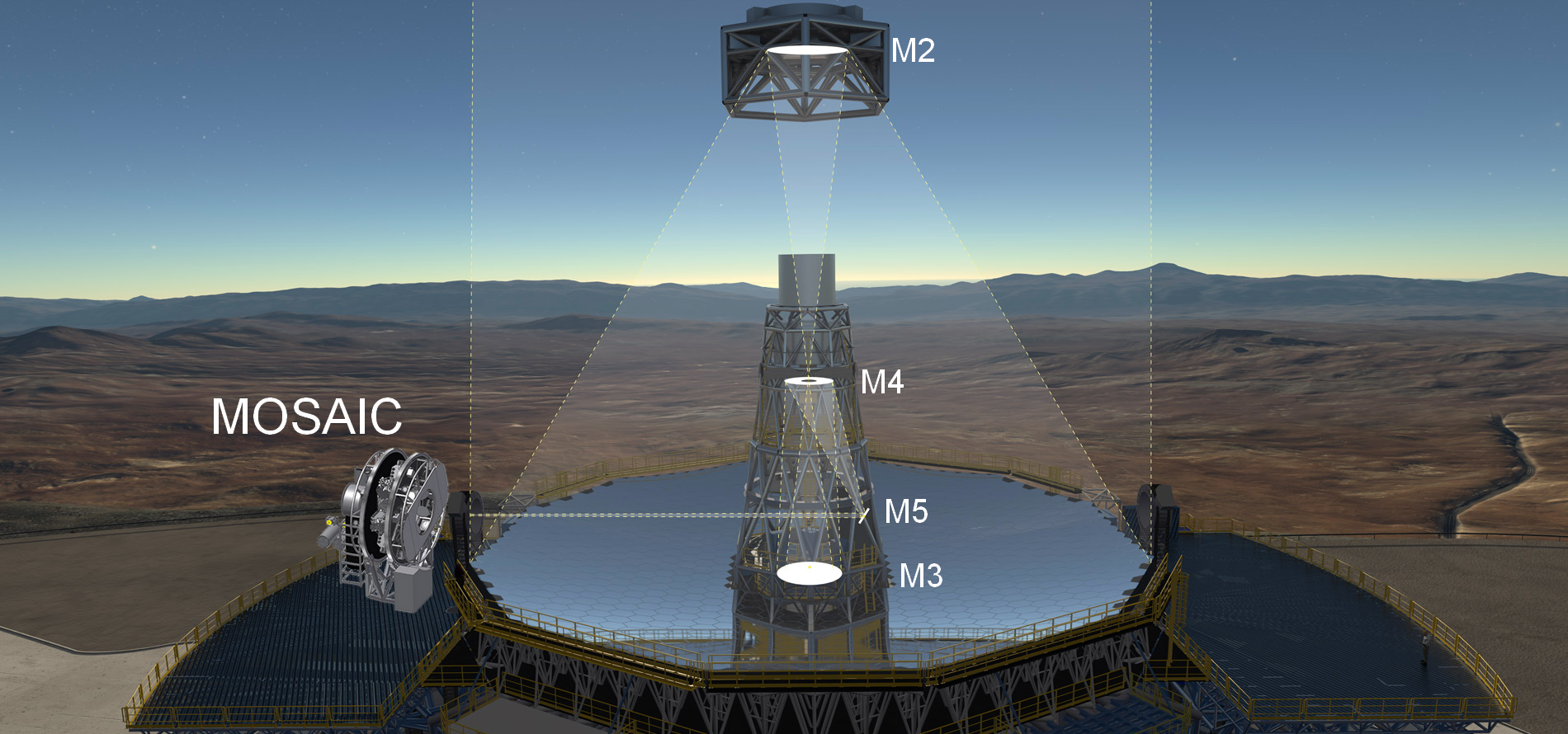MOSAIC in a nutshellMOSAIC is a multi-object and multi-integral field spectrograph that will use the widest possible field of view provided by the ELT. The MOSAIC top-level requirements have been based on a comprehensive White Paper summarizing the very numerous scientific cases for a multi-object spectrograph on the ELT. MOSAIC is conceived as a multi-purpose MOS for the ELT, covering the Visible and Near Infrared bandwidth (0.39 – 1.8 μm) with two modes: multi-object spectroscopy (MOS) and spatially resolved spectroscopy (mIFU). MOSAIC will be located at one of the Nasmyth port of the ELT. The instrument will work with Ground Layer Adaptive Optics image quality over the full field of view of the ELT ~40 arcmin2 and over a nearly full sky coverage. GLAO combines 4 laser guide stars.
| ||

